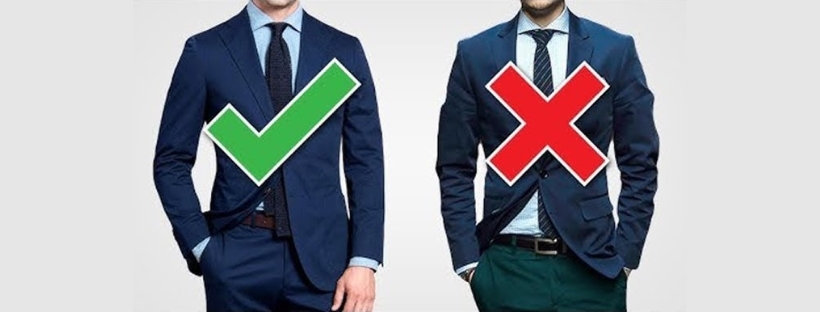
The Dos and Don’ts of Wearing a Suit
As rightly said by Daniele Donato, “Fashion is an art.” Before wearing a suit, you have to learn what the dos and don’ts are and how to style them most fashionably, as well as stay in the trend.
Be it if you’re just beginning to wear suits regularly or you’re already wearing them daily, it does not matter. It is always better late than never. In this article, let’s dive through the dos and don’ts dealing with every part of the suit ensemble.
Must-know Suit Etiquettes for Men
- Blazers or Jackets
Firstly, the overcoats are meant to fit your torso region and the length can vary based on your height. If you’re taller, make it a bit longer, and vice versa. However, it is easy for the designer to remove the fabric slightly if the length is longer than expected, but when tailored short, there is no chance of adding the fabric. Secondly, based on the need, you can add the lining—light or layered.
- Hems and cuffs
The purpose of hemming is to give a neat finish to edges and prevent them from raveling. So, ensure they are neatly stitched.
The sleeve length of the shirt or the suit must adhere to the standards—the shirt must be visible for at least ½ inch off the suit or the blazer.
- Shoulder and armholes
Shoulder fabrics ought to be flat and without any wrinkles, despite the padding. The arm holes must be large enough to ensure free hand movements, as well as in proper shape, without too much fabric left behind. However, the looseness can vary depending upon the suit style—classic or modern.
- Collar and lapels
Ideally, the suit collars have to lay against the dress shirt collars without bunching. The width of the lapels can vary between traditional and contemporary styles. Also, the wearer can personalize the lapel types between notch, peak, or shawl.
- Trousers: waist and legs
The suit trousers must be rightly seated around the higher region of your hip bone or the waist. The width of the seat portion must be correctly measured to ensure the trousers fit the waist without a belt to hold them.
The regular width between the legs and the trouser fabric is one inch. For baggy or classic pants, it can be more.
- Belts, watches, and shoes
You can choose between belts and suspenders, depending on the suit style. Despite this, they have to complement the shoes in terms of color and material. If you’re trying something unique, gaudy, or witty, it can contrast. Most importantly, make sure your socks give full coverage to the ankles.
On the other hand, match the watches as per your suit styles—formal, casual, athletic, etc. If possible, try to match them with the color of your belt or shoes.
- Button stance and fastening
The first button on the suit must sit right above the navel region and the first button on the dress shirt must sit 2⅞ inches right below the bottom of the collar. The top button placement on the dress shirt can vary slightly based on the needs of the wearer.
There are specific sets of rules for fastening the buttons on the single and double-breasted suits. For example, they can be completely unfastened when sitting and at least one button must be fastened when standing.
Apart from these, there is a lot to cover, including fit, measurement, neckties, pocket squares, brooches, jewelry, button-down shirts, waistcoats, vests, sunglasses, etc. We will try to cover them in the upcoming blog posts. Stay tuned!
Recent Posts

